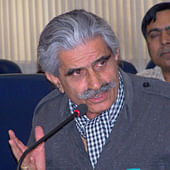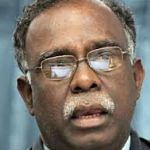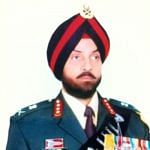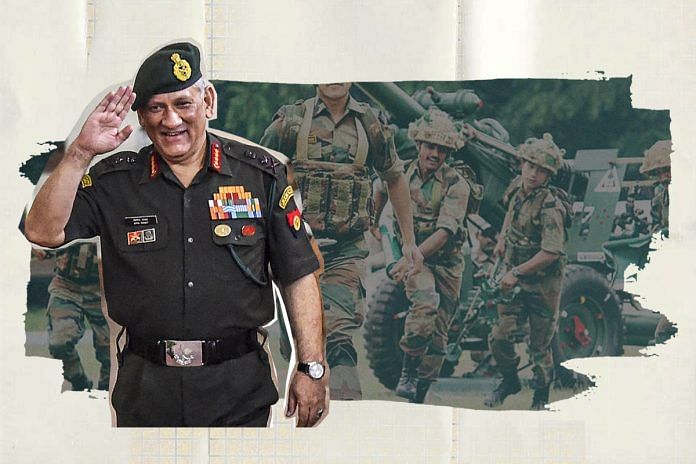Army chief General Bipin Rawat is set to issue orders to reduce personnel at the Army Headquarters (AHQ) in New Delhi. The move is being viewed as an indirect attack on the lobby for postings in the capital.
ThePrint asks – Indian Army reforms: Cutting administrative flab or needless downsizing?
Whims of political and military leadership have driven reforms in Indian armed forces
 Major General Ashok Mehta (Retd)
Major General Ashok Mehta (Retd)
Founder-member, Defence Planning Staff, Ministry of Defence and columnist, security issues
The national security establishment did not carry out any systematic strategic and defence reviews. It resorted to ad-hocism instead. The driver for its reforms has largely been the whims of political and military leadership.
Reforms have taken place earlier as well. There were the K.V.K. Rao reforms in the mid-1970s. In the 1980s came the first systematic security review by the defence planning staff. Needless to say, it wasn’t fully implemented. Then, the Kargil review committee report, the Naresh Chandra task force recommendations and most recently, the Shekatkar committee report came out. These reports have some very valuable recommendations that need to be reviewed and implemented.
Currently, a similar internal review is being carried out by Army chief, Bipin Rawat. It has two objectives: to carry out reforms and cut administrative flab. It aims to improve the tooth-to-tail ratio, in other words, downsize the army. There is a precedent for this. General Ved Prakash Malik did exactly this during his tenure as Army chief from 1997 to 2000. He cut manpower by 50,000 and saved at least Rs 5,00 crore which was supposed to be diverted towards modernising the Army, but never was.
Some internal reforms are also being attempted. These consist of a reorganisation of the Army headquarters, streamlining combat formations and removing further flab. Moreover, the chief is attempting to reduce the number of combatants being used for non-combat duties with senior serving and retired officers.
On the operational side, changes should be made after a holistic review is carried out. The two other forces, especially the Air Force, should be involved in this decision.
Counter-terrorism and counter-insurgency have now become the primary role of the Indian Army. Almost one-third of the Army is utilised for this. In addition, the Army provides up to 10,000 troops at any point in time for peacekeeping. Maybe it is time to revisit the old proposal that advocates segregating the Indian Army into an internal security force and a conventional force to deal with external threats.
Also read: Over 300 soldiers question CBI’s FIR against Army officer, SC to hear case on 4 Sept
Can’t afford to reduce military size, India needs boots on the ground
 Air Marshal M. Matheswaran
Air Marshal M. Matheswaran
Former deputy chief of integrated defence staff in HQ IDS, Ministry of Defence
Downsizing the military, especially the Army, seems to be the flavour of discussions in New Delhi and in academic, strategic, and financial circles. Much of it is lop-sided and without clear understanding.
The Army chief’s recent statement is more about reducing the administrative flab in the headquarters and enhancing the combat potential rather than downsizing the Army. His view on enhancing the combat potential is also about changes in ‘operational philosophy’. But, critics are likely to grab the wrong end of this statement and holler for downsizing the Army.
Organisational restructuring in militaries is an important element of revolution in military affairs (RMA). But that cannot be the first step. RMA must address the changes required in the ‘operational philosophy’ – driven in part by technology, and in part by politico-strategic considerations.
It is the operational philosophy that should drive the organisational restructuring that is necessary. The Indian Army has a lot of flab, not necessarily in the HQ but due to its colonial legacies and traditions. This flab needs to be converted into a full-fledged combat force.
India cannot afford to reduce its military size, least of all its Army strength of 1.3 million. We need the effective strength of boots on the ground. The RIIMA needs to focus on this aspect of modernisation driven by operational and strategic necessities. The same logic applies to the Air Force and the Navy, wherein they need to enhance their combat potential by removing wasteful appendages and flab. They also have a case for increasing their strength, but that must come after restructuring to remove their flab.
Without proper execution, this will remain a cosmetic standalone exercise
 Lt Gen H S Panag (R)
Lt Gen H S Panag (R)
Former GOC-in-C, Northern & Central commands
As per media reports, the Indian Army is in the process of a holistic cadre review to “restructure” and “right size” the Army to bring about a revolution in Indian military affairs (RIIMA). The study has been ordered in May 2018 and is likely to take six months to come up with concrete proposals.
Media’s focus has been on the “proposal” to do away with the division headquarters and place the restructured all-arms brigades directly under the corps headquarters. This concept was adopted by the US Army in Iraq and Afghanistan post-Gulf War 2.
Revolution in Military Affairs (RMA) is an all encompassing military theoretical hypothesis, about the future of warfare connected with technological, structuring and organisational changes to transform the armed forces to fight the wars of the future. As such, the proposed study must have government approval, it must be tri-service in nature and the defence minister should be the prime mover. More importantly, the government needs to first formalise a national security strategy. Only then can it formulate a force development strategy in tune with the RIIMA. The government has to finance the RIIMA, which is a very costly exercise. Thus, it has to be top-down in concept and bottom-up in execution.
Once the recommendations for RIIMA crystallise, trials would have to be carried out before the final approval. The funding and execution of such a revolution takes place over 5-10 years.
At the moment, RIIMA does not seem to be on the government’s radar. In the absence of the above prerequisites, the Indian Army’s study will remain a standalone cosmetic exercise and nothing more. It would be prudent for the three chiefs to get together and prevail upon the government to create the prerequisites for the RIIMA to begin.
RMA is the key to understanding the buzzword RIIMA that the Indian Army is talking about. But in the absence of prerequisites for RMA, RIIMA will only remain a “buzzword”.
In the project’s gestation period, there is ample scope for the three services to carry out an in-house organisational review to reduce the manpower flab. In view of modern weapon systems with much higher accuracy and lethality, there is no point in hanging on to the World War 2 organisations. This exercise alone can “down size” the army by 25 per cent.
Also read: Pak army chief offers Guru Nanak peace corridor to Sidhu, BJP up in arms
Before General Bipin Rawat can downsize Army, he needs to ensure change of mindset
 Sujan Dutta
Sujan Dutta
Editor, Defence, ThePrint
Army chief General Bipin Rawat’s move to cut administrative flab in his headquarters, create integrated brigades and “right size” his force is in sync with global trends in modern militaries. As he sets out to push through his ideas, there are three urgent requirements.
The first is a change of culture or, as Rawat is fond of saying, a change of mindset. This would involve not just a willingness to accept a new structure in the military hierarchy that he has proposed – doing away with divisions, for example – but also mean using new signs of respect for soldiers through the ranks.
It would mean, for example, doing away with the “sahayak” system. Despite its origins – when the sahayak used to be the radio operator of the officer – the system has gotten corrupted over the years. There are occasions wherein sahayaks have been used for menial labour in officers’ family quarters.
With the rise in the standard of education and the increasing use of digital technology, soldiers today are far more informed than a decade ago. Therefore, it is not surprising that the number of soldiers who have used social media to complain about internal systems of discrimination has increased.
The second important requirement is the infusion of technology. This does not have to do only with the Army. Indeed, the Army has limited powers for acquisition of weapons although it is the biggest user.
Acquisition processes have been so tardy that most proposals usually outlast the governments that shape them. “Rightsizing” the 1.3 million-strong Army without the technology that will enhance firepower and agility runs the risk of weakening it.
A third important requirement is for the Army, the Navy and the Air Force to synergise not only operations but also systems. Turf wars are not unknown.
The services have to address administrative issues that may crop up with Rawat’s proposals, such as what happens to the equivalent ranks of the Brigadier in the Air Force and the Navy (Air Commodores and Commodores) if the rank were to be abolished in the Army.
Compiled by Deeksha Bhardwaj, journalist at ThePrint. You can reach her @deekbhardwaj on Twitter.




Day in and day out more and more civilian vacancies are created in the MoD why doesn’t Rawat seek organisational audit of the MOD. Why does he accept this wasteful expenditure. All the money saved by the present exercise will go in creating some more JS or even higher level posts
Many colonial practices need to done away with like dinner nights . Too many officers messes in a single station . The same can be merged and run as composite station messes . Guests can be accomodated in Hotel chains . Tie ups can be worked out. These small measures can go a long way.
Comments by veterans have some related and important inputs. These are being looked into by the present hierarchy.
Datta is an academician and should comment on professional issues rather than lowly n irrelevant issue of Sahayak system. He should first serve in forces in any capacity. He ll surely eat up his words in quick timeframe.
The biggest problem is our veterans when they were in chair did nothing worthwhile in their lifetime and when they go out they suddenly become know all of the entire world. Each of these generals and marshals have no connect with the new generation of officers And men and have no idea as to what they want and aspire. I pity these guys wasting time of nation.
War is not always occur ,real war is fighting by Pera military forces and army are enjoying peace posting except some paltan even they also not so long as other cpmf hard posting and prolong engagement in hard area.
humorous. …. u should also join army for peace postings in siachen, drass, lolab valley, gurez, sopore, rajouri, pooch, Tangtse, DBO, Sumdo, Nathula, Arunachal, Assam, nagaland etc. ..I am sure you wouldn’t be able to point out these places on map of India. ..
Army is now transforming to a modular organization of Brigade Combat Teams (BCTs) in an effort to become a lighter, leaner, more agile force. To paraphrase Boyd’s Pathology on cancer etiology – “The essential cause is still completely unknown; the veil covering the mystery has not yet been rent in twain. Theory after theory cometh up as a flower, only in turn to be cut down like the grass.”
If you want to give God a good laugh, tell Him your plans. ~ Yiddish Proverb
Left on their own the Indian Armed Forces are quite capable of deciding what is god for them. Babus and over staffed MOD need to give way to experts first and this Country needs to respect their armed forces next.
Mere announcement of a cadre restructure is not the end all, it has to be well thought out. For example who and what rank will the deputy Bde Cdr or Dy GOC hold? Will doing away with the rank of a Brigadier be of help in an increase of promotional avenues or reduce the chances of promotions? How will the channel of reporting work with both the Bde and Div being commanded by a Maj Gen? Are there other methods of bringing in pay parity and equation between the IAS/IPS & Armed Forces?
Can AHQ and MOD play a positive role rather than divisive one?
Can National Security be left to people who lack experience /training and learning?
All of this is mere humbug and not required at all.
Govt needs to get its priorities right without compromising on National Security. Selling defence land or reducing numbers will not work in our environment along long borders. Let us not copy paste ideas borrowed from other countries since the operational environment and compulsions are different.
Keel away IAS from these reforms otherwise what may happen everybody knows.
Very well said by Sujan dutta Sir,I fully agree with his thoughts .Indian army should come out of colonial system of British Era if Indian Army has to become strong force of the world.
The morale and enthusiasm among jawans before entering the forces are at their highest peak but suddenly as he serve for some time in the force,his morale and josh graph comes down drastically and he plans to leave it as soon as possible and as it can be seen that now more and more Jawans are leaving the Forces as they get first possible opportunity.
As I know every officer in the force knows this but no one cares and enjoys their status and power and no one thinks to improve this.
The jawans are being used as their servants that too by paid by Indian Govt who can’t open their mouth also. If someone tries to open he will be punished or may be made out of service which jawan would have been joined to serve his ill mother.
I suggest to General Rawat saab if all these issues are resolved and make Army a prestigious force ,everyone has to be treated as Indian Soldier without any difference in individual’s dignity,so that all soldiers serve with GREAT JOSH AND PATRIOTISM without any difference in Officer and Jawan.
The time has come to make forces a organisation where individuals should work/ serve from his inner conscious at his full capability for his country.And for that Jawan has to treated as a soldier not as a servant or a Poor Indian of pre 1947.I think this is much I have said and wise people will understand it much better.
Jai Hind …Jai Bharat
As Much as officers are at fault, your precious jawans are not saints either. Most of them have no interest in serving the nation. There is no other organization in the world that recruits soldiers for permanent contracts from the get go and that too with a promise of pension once a service period of 15 to 17 years has been attained. So these jawans are to be spoonfed from the day they join the service till the end of their time and that of their spouses. Add to that the fact about them having to bear minimum expenses during service. Everything from their rations to their accommodation is taken care of at ridiculously subsidized rates. These guys are basically unmotivated, lazy and prefer whiling away their service years as sahayaks contrary to popular belief. The army needs to bring in technology and mechanization while kicking out these unqualified freeloaders from non-technical arms who feed on the sympathy of the common citizens.
Why doesnt the govt listen to its own reports from the past? After the fiasco in lack of coordination during the Kargil War. The govt of Atal ji had recommended the creation of a Joint Chief. This is a must need of the armed forces right now. Most modern militaries of the world (US, UK, China) all have one Joint Chief over the three service chiefs, this results in better control and coordination of resources between the forces. All this reorganization is useless if there is jointness between the forces. The opposition must do something about this.
Superficial commentary by veterans whereas Datta is ignorance personafied by not understanding the topic